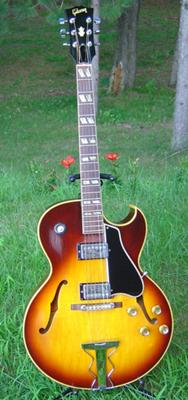Chord Formulas
Major, Minor, and Seventh Chords
What are chord formulas"? They are a simple way to let you build any chord you want WITHOUT having to carry around one of those chord charts! Granted, the charts may seem easier in the beginning, but if you want to be a MUSICIAN, you need to understand what it is that you are playing. That is the reason I did not include any graphics on this page--I want you to THINK!
On this page we will learn the chord formulas for major,minor and seventh chords. Augmented, diminished and extended chords will be covered on the next page. If you want to skip this page and go immediately to the rest of the chord formulas, click here. In order to benefit from these chord-formulas, you MUST be thoroughly familiar with the key signatures for major scales. If you need to review, the link opens in a new window.
|
|
OK ready?
Major Chord Formula
The formula for a major triad is 1 3 5. Simple, right? What it means is that to build a major chord, play the 1st, 3rd and 5th notes in major scale.
EXAMPLE: You want to play a "G major" chord so use G B D. What if you want to play an "E major" chord? Remember that the key of "E major" has 4 sharps. One of them, "G#", falls on the 3rd note of the scale so the major chord is E G# B.
Do you see why it is important to know the key signatures? If you practice building the major triads for all twelve keys using ONLY your knowledge of this formula, you will be glad that you made the effort!
Minor Chord Formula
Once you are familiar with the major triads, you are ready for minor. The formula for a minor triad is 1 b3 5. In other words, you move the middle note of the major triad down 1/2 step.
EXAMPLE: If you want to play a "C minor" chord, start with the major triad (C E G) and move the "E" down to "Eb".
What if you want to play an "A minor" chord? The "A major" triad is A C# E so you move the "C#" down 1/2 step to "C". Just remember that if the middle note in the major is a natural(or white key) then the middle note in the minor triad is a flat(or black key) and vice versa.
Practice building these chords in the same manner as you did the major triads. Remember, you are investing in your musical future.
NOTE TO GUITAR PLAYERS: Don't Miss This Opportunity!
Are you ready to take your guitar playing to the next level? My friend, Alex Cortes has just released his new course, "Fretboard Essentials".
Get ready for some simple fretboard secrets that will knock you over. I highly recommend that you Visit Fretboard Essentials and give yourself the gift of EXTRAORDINARY guitar playing!
Formulas For Seventh Chords
There are FOUR basic types of seventh chords: Major 7, Minor 7, Dominant 7 and Diminished 7. Here are the chord-formulas:
Major Seventh--1 3 5 7
(EXAMPLE: C E G B) (NOTATION: CM7 or Cmaj7) This is NOT the chord you play when someone says "C7". That is a whole different animal. This chord functions as I or a IV chord. Chord Functionsare explained here.
Basically, this chord is constructed by starting the MAJOR TRIAD and adding the SEVENTH note in the scale.
Dominant Seventh--1 3 5 b7
THIS is the chord you want when you are told to play "C7". This chord functions as a V chord. (EXAMPLE: C E G Bb) (NOTATION: C7)
Construct this chord by starting with the MAJOR TRIAD and adding the flatted seventh note in the scale.
Minor Seventh--1 b3 5 b7 (EXAMPLE: C Eb G Bb) (NOTATION Cm7 or Cmi7) This one functions as a ii iii or vi chord.Build it by starting with the MINOR TRIAD and adding the flatted seventh note of the scale.
Diminished Seventh--1 b3 b5 bb7 (EXAMPLE: C Eb Gb Bbb) (NOTATION: Co7) This chord is so interesting that it get it's own lesson! As soon as I finish the lesson, I will put a link on this page.
If you want to build this chord, start with the MINOR TRIAD,and flat the third note (the 5th note in the scale) then add the double flatted seventh note of the scale. Easy, right? Well it DOES get easier with practice.
OK on to Augmented, Diminished,and Extended Chords.
Leave "Chord Formulas" and Go To "Music Theory Basics"
Go to "Absolutely Free Music Lessons"





New! Comments
We welcome your comments and ideas! Leave a comment in the box below.